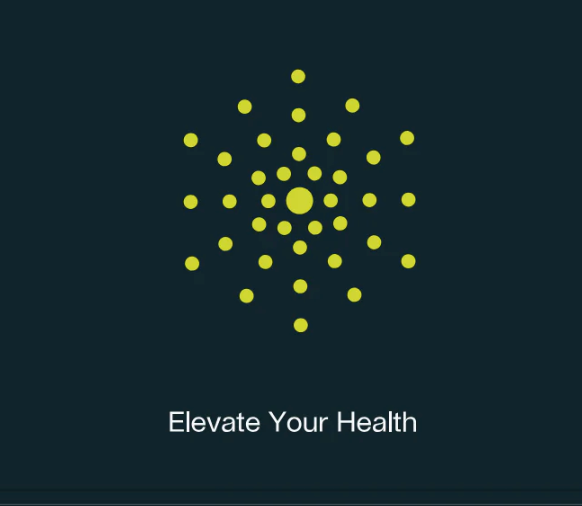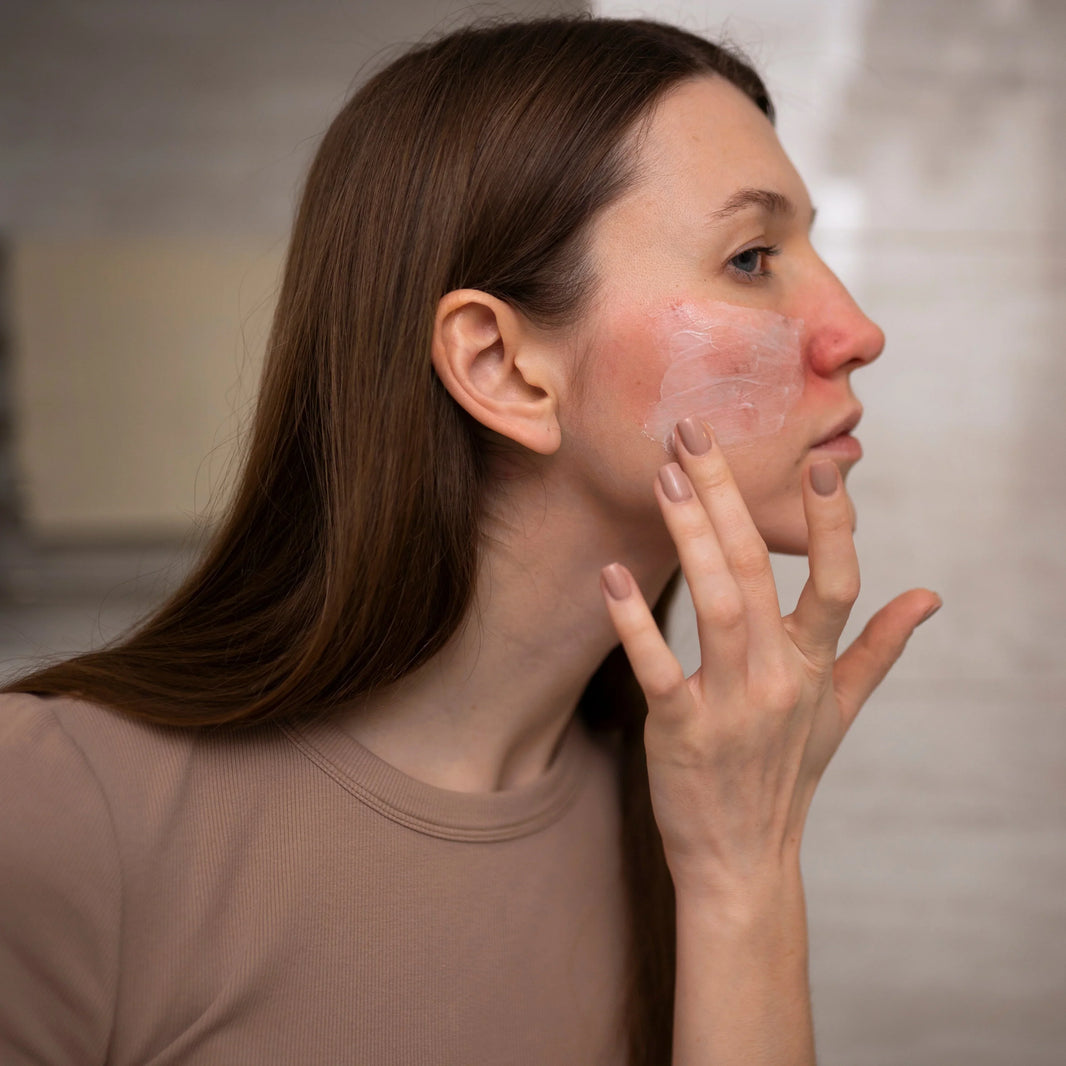For the approximately 1.8 billion people who menstruate globally each month, menstrual health extends far beyond the physical experience of blood loss. Many experience premenstrual conditions, menstrual pain, limited access to healthcare, and menstrual stigma that significantly impacts their quality of life. This report examines the multifaceted nature of menstrual health support, analyzing its mechanisms, pathways, targets, and the evidence base for various interventions.
The Evolution and Definition of Menstrual Health Support
Menstrual health support has evolved significantly in recent years, moving beyond the narrow focus on menstrual hygiene management (MHM) that primarily emphasized product provision. While MHM initiatives have achieved considerable success, scholars have critiqued their limited scope, which often neglects the broader physiological, psychological, and social dimensions of menstruation. Global institutions have responded by shifting their focus toward comprehensive menstrual health, framing it as both a health and human rights issue1. This expanded conceptualization recognizes the entire menstrual cycle, including menarche and menopause, and acknowledges menstruation as a vital sign of overall health.
The comprehensive approach to menstrual health support encompasses multiple dimensions: access to information and education, healthcare services for menstrual disorders, supportive environments, menstrual products, and policy frameworks that protect menstruators' rights. This holistic perspective acknowledges that effective menstrual health support requires addressing physiological, psychological, social, and environmental factors simultaneously18. The right to menstrual health is increasingly recognized as fundamental to achieving gender equity and women's full participation in society.
Despite growing recognition of its importance, the Committee on Economic Social and Cultural Rights and the Special Rapporteur on the Right to Health have remained largely silent on menstrual health. This gap highlights the need for these mechanisms to conceptualize and promote a comprehensive right to menstrual health that advances health literacy, agency, participation, cultural sensitivity, and increased scrutiny of the menstrual products industry1.
Physiological Mechanisms and Pathways of Menstrual Health
Hormonal Regulation and Biological Pathways
The physiological foundation of menstrual health lies in the complex hormonal regulation of the ovarian-menstrual cycle. This intricate system involves positive and negative feedback mechanisms between estradiol and progesterone levels and the activity of anterior pituitary gonadotropic hormones3. Any disruption in this delicate balance can lead to menstrual disorders requiring specific interventions.
The hypothalamic-pituitary-gonadal axis serves as the primary biological pathway regulating menstruation. This axis can be influenced by various factors, including stress, which has been shown to affect hormonal balance and potentially disrupt regular menstrual cycles. Research indicates that chronic stress can lead to dyshormonal disorders of the reproductive system, underscoring the importance of addressing psychosocial factors in menstrual health support4.
In addition to these central mechanisms, local uterine processes are essential for menstrual health. The endometrial epithelium undergoes cyclical regeneration, facilitated by bipotent stem cells that persist through tissue loss during menstruation. These stem cells generate all endometrial epithelial lineages, maintaining the functional integrity of the uterine lining throughout a female's reproductive lifespan16. Understanding these regenerative processes provides valuable insights into both normal menstrual function and potential pathological conditions.
Psychological and Social Pathways
Psychological factors significantly influence how individuals experience and manage menstruation. Self-efficacy has emerged as a crucial mediator in coping with menstrual pain, with higher self-efficacy associated with reduced pain-related disability6. Social support systems, including both parental and partner support, can enhance self-efficacy and thereby improve menstrual health outcomes, although research suggests that parental support may have a stronger influence than partner support in young adults6.
The normalization of menstrual conversations represents another critical pathway to improved menstrual health. In environments where menstruation remains taboo, individuals often experience increased shame, embarrassment, and reluctance to seek help for menstrual concerns713. Initiatives that destigmatize menstruation can therefore significantly enhance menstrual health by creating supportive atmospheres where menstruators feel comfortable discussing their experiences and seeking appropriate care.
Target Areas for Menstrual Health Support
Individual-Level Targets
At the individual level, menstrual health support aims to improve knowledge, attitudes, and practices related to menstruation. Enhancing menstrual health literacy constitutes a primary target, with evidence demonstrating that educational interventions can significantly improve functional, interactive, and critical menstrual health literacy15. Programs like My Vital Cycles®, a holistic school-based ovulatory menstrual health literacy program, have shown success in improving adolescents' understanding of their menstrual cycles as personal health monitors15.
Another crucial individual target involves developing self-management skills for menstrual symptoms and conditions. This includes teaching practical skills for managing menstruation, promoting awareness of normal versus abnormal menstrual patterns, and supporting individuals in seeking appropriate healthcare when needed. For individuals with intellectual disabilities, targeted interventions focusing on pad-replacement skills have shown significant improvements in participant capabilities, though research on broader aspects of menstrual health for this population remains limited5.
Institutional and Environmental Targets
Schools represent a primary institutional target for menstrual health support. Research from Kenya has demonstrated that poor menstrual health and hygiene environments in schools contribute to absenteeism, with adolescent girls missing 3-5 days of school during their menstrual cycles depending on available materials17. School-based interventions targeting water, sanitation, and hygiene (WASH) facilities, product provision, and education have shown promise in improving attendance and academic performance17.
Healthcare systems constitute another crucial institutional target. Providing accessible, affordable, and high-quality care for menstrual disorders remains challenging in many contexts. Healthcare providers often lack adequate training in menstrual health, resulting in delayed diagnoses and suboptimal management of conditions like dysmenorrhea and menstrual irregularities34. Strengthening healthcare systems' capacity to address menstrual health needs represents an essential component of comprehensive support.
Workplace environments also require attention, particularly in industries with limited access to appropriate facilities. Research examining sex work venues in Kenya found that only 29.8% met full WASH criteria, and just 25.5% provided soap and water in private spaces for women19. These findings highlight the need for interventions targeting diverse occupational settings to ensure all menstruators have access to adequate facilities regardless of their work environment.
Policy and Regulatory Targets
Policy frameworks significantly influence menstrual health support availability and accessibility. Legislative initiatives mandating menstrual product provision in schools have gained momentum, with 21 U.S. states having enacted such legislation as of 202211. However, political factors appear to influence policy adoption, with Democratic-controlled states implementing significantly more menstrual product laws compared to Republican-controlled states11. This disparity underscores the need for bipartisan approaches to menstrual health policy.
Regulatory oversight of the menstrual products industry represents another important target. Current regulatory frameworks often provide inadequate scrutiny of product safety, efficacy, and accessibility1. Strengthening these frameworks could enhance product quality while improving access for underserved populations through subsidies, tax exemptions, or direct provision programs.
Evidence-Based Interventions in Menstrual Health Support
Educational Programs and Interventions
Menstrual health education represents one of the most extensively studied interventions, with substantial evidence supporting its effectiveness. Programs that adopt a holistic approach to ovulatory menstrual health literacy have demonstrated significant improvements in functional, interactive, and critical dimensions of menstrual health literacy among adolescents15. My Vital Cycles®, implemented within the Health Promoting School framework in Western Australia, improved 15 out of 20 items for functional menstrual health literacy, 19 out of 53 items for interactive literacy, and 18 out of 25 items for critical literacy15.
For individuals with intellectual and developmental disabilities, specialized educational approaches have shown promise. Interventions using dolls and task analysis to teach pad-replacement skills have demonstrated significant improvements in skills and knowledge5. However, most studies in this population focus narrowly on practical skills rather than broader aspects of menstrual health, including self-agency and psychological well-being, highlighting an area requiring further development5.
Teacher education represents another evidence-based approach to improving menstrual health support in schools. Research from Kenya demonstrates that sensitizing teachers to menstrual health concerns can positively impact girls' attendance and academic performance17. When teachers become more informed and comfortable discussing menstruation, they create more supportive environments where students feel safe seeking assistance with menstrual concerns.
Environmental and Infrastructure Interventions
Improving WASH facilities constitutes a critical evidence-based intervention for menstrual health support. Studies from multiple countries have identified unreliable water access, inadequate disposal mechanisms, unclean facilities, and insufficient latrines as key barriers to effective menstrual management1419. Interventions that address these infrastructure gaps have shown promise in creating more enabling environments for menstrual management, particularly in school settings.
In the Philippines, research comparing urban and rural schools found that WASH deficiencies significantly hindered girls' menstrual hygiene management14. Schools with better oversight of WASH hardware and facilities in better condition created more enabling environments for menstrual management. These findings underscore the importance of sustained support and system oversight to maintain adequate WASH infrastructure for menstrual health.
The provision of menstrual products in institutional settings represents another evidence-based intervention. Research indicates that providing free menstrual products in schools reduces absenteeism and improves students' confidence and concentration1117. Legislative initiatives mandating product provision have increased, reflecting growing recognition of menstrual products as essential items rather than luxury goods.
Pharmacological and Clinical Interventions
For menstrual disorders requiring medical intervention, several pharmacological approaches have demonstrated efficacy. The phytopreparation Vitex Agnus castus has shown effectiveness in women with dyshormonal disorders, particularly under conditions of chronic stress4. Its dopaminergic effect on psychoemotional status helps eliminate latent stress-induced hyperprolactinemia, comparable to synthetic prolactin secretion inhibitors, while simultaneously harmonizing female sex hormone concentrations and normalizing gonadotropic hormone ratios4.
For polycystic ovary syndrome (PCOS), a common cause of menstrual irregularities, metformin has proven effective, particularly in clomiphene-resistant women3. Combining metformin with clomiphene or sitagliptin appears to further enhance effectiveness. Gonadotropins have also demonstrated efficacy in stimulating ovulation by promoting egg production and maturation3.
Clinical support for menstrual pain management represents another important intervention. While the specifics of optimal pain management approaches require further research, evidence suggests that a multifaceted approach incorporating pharmacological and non-pharmacological strategies may be most effective6. Self-efficacy enhancement appears to play a crucial mediating role in pain management, suggesting that interventions building confidence in pain-coping abilities may prove beneficial6.
Interventions with Limited Evidence
Education Beyond Skill Development
While education programs have demonstrated effectiveness in improving knowledge and practical skills, evidence regarding their impact on long-term health outcomes and self-agency remains limited5. Most interventions for individuals with intellectual disabilities focus narrowly on pad-replacement skills, with only one study addressing self-agency and self-esteem as outcomes5. This gap highlights the need for research examining how menstrual education can enhance psychological wellbeing and autonomous decision-making beyond basic skill development.
Similarly, while school-based education programs show promise, their long-term impacts on menstrual health knowledge retention and behavior change require further investigation. The integration of menstrual health education into regular curricula, rather than as standalone interventions, may enhance sustainability, but evidence supporting this approach remains limited.
Comprehensive Support for Special Populations
Menstrual health support for special populations, including athletes, individuals with disabilities, and those in institutional settings, lacks robust evidence despite clear needs. Female athletes experiencing traumatic brain injury (TBI) may experience menstrual cycle changes due to disruption of hormonal regulation, but research in this area remains limited9. Further investigation is needed to understand the mechanisms and implications of these changes and develop appropriate support strategies.
For women in psychiatric inpatient settings, menstrual experiences can be particularly challenging. Some patients report receiving dignified care, while others describe "degrading" and "dehumanizing" treatments that enhance feelings of shame and embarrassment around menstruation13. The interplay between mental health services overlooking menstruation and overreliance on restrictive practices can create circumstances amounting to neglect and iatrogenic harm, but evidence-based interventions addressing these specific challenges remain underdeveloped13.
Policy Implementation and Evaluation
While policy initiatives supporting menstrual health have increased, evidence regarding their implementation and impact remains limited. Analysis of state legislation supporting menstrual product provision in U.S. schools reveals significant disparities, with Democratic-controlled states implementing more such laws than Republican-controlled states11. However, rigorous evaluations of these policies' impacts on menstrual health outcomes, educational attainment, and economic participation are scarce.
Similarly, international policy frameworks addressing menstrual rights lack comprehensive evaluation. Despite increasing programs aimed at achieving menstrual health, addressing the legality and rights dimensions of these programs has been marginalized8. This gap highlights the need for evidence-driven plans aligning with long-term developmental goals to improve women's and girls' menstruation and reproductive health and rights8.
Special Considerations for Diverse Contexts
Cultural and Geographical Variations
Menstrual health support must account for cultural and geographical variations in needs, beliefs, and practices. Research from the Philippines demonstrates how WASH challenges differ between urban and rural settings, with each context presenting unique barriers to effective menstrual management14. In rural Masbate and urban Metro Manila, unreliable water access, inadequate disposal mechanisms, and insufficient facilities posed significant challenges, while South Central Mindanao's better oversight of WASH hardware created more enabling environments14.
Cultural attitudes toward menstruation significantly influence support effectiveness. Programs that acknowledge and respectfully address cultural beliefs while providing accurate information demonstrate greater success than those imposing external perspectives. Engaging community leaders and incorporating local perspectives in program development enhances cultural relevance and acceptance.
Life-Course Perspectives
Menstrual health needs evolve throughout the reproductive lifespan, from menarche through menopause. While much research focuses on adolescents, comprehensive support requires addressing changing needs across this continuum. The recognition of the entire menstrual cycle, including menarche and menopause, represents a crucial advancement in menstrual health conceptualization1.
Biological mechanisms underlying menstrual health also reflect this life-course perspective. Endometrial epithelial stem cells persist through cyclical tissue loss during menstruation, generating all endometrial epithelial lineages throughout a female's reproductive lifespan16. This regenerative capacity underlies normal menstrual function while potentially contributing to conditions like endometriosis and uterine cancer when dysregulated.
Psychological and Social Dimensions
The psychosocial dimensions of menstruation significantly influence experiences and support needs. Research examining elite female soccer players found that while menstrual cycles were tracked, players reported little understanding of why or how this information was used7. This confusion extended to stakeholders, often resulting from uncertainty about evidence supporting menstrual health interventions. The perceived lack of support reflected a culture where conversations about menstruation were not normalized, potentially resulting in failure to identify and treat menstrual irregularities7.
Social support from parents and partners influences how young women cope with menstrual pain, with self-efficacy mediating this relationship6. Research suggests that parental support may have a stronger positive association with pain-related self-efficacy than partner support, highlighting the importance of family-based approaches to menstrual health support for young adults6.
Conclusion: Future Directions for Menstrual Health Support
The landscape of menstrual health support has evolved significantly, moving from narrow focuses on hygiene management toward comprehensive approaches addressing physiological, psychological, social, and environmental dimensions. Evidence supports educational interventions, WASH improvements, product provision, and certain pharmacological approaches, while highlighting gaps in understanding long-term outcomes, special population needs, and policy implementation.
Future research should prioritize rigorous evaluation of comprehensive interventions addressing multiple dimensions simultaneously, examine long-term outcomes beyond knowledge and skill improvement, and develop tailored approaches for diverse populations and contexts. Policy development should emphasize evidence-based approaches while engaging across political spectrums to ensure universal access to menstrual health support.
Framing menstrual health as a fundamental right represents a promising direction, potentially leveraging existing human rights frameworks to advance comprehensive support. This approach recognizes menstruators' rights to health literacy, agency, participation, and cultural respect while ensuring appropriate oversight of the menstrual products industry1.
Ultimately, effective menstrual health support requires collective action across sectors, disciplines, and stakeholders. By building on existing evidence while addressing current gaps, we can create environments where all individuals who menstruate can do so with dignity, comfort, and appropriate support throughout their reproductive lifespans.
Citations:
- https://www.semanticscholar.org/paper/31f6c82f820e5603021bdc7e93a9ce0370430ad6
- https://www.semanticscholar.org/paper/36fa5a9e9aa3b8ee6db374321241601a791a679b
- https://www.semanticscholar.org/paper/86f0b600b3a7ec4289b65f655449ff62387fed16
- https://www.semanticscholar.org/paper/e61ea473424cbba217a79b9c5e5c3a44dcf9fe2d
- https://pubmed.ncbi.nlm.nih.gov/38863161/
- https://www.semanticscholar.org/paper/e304c40fd04c87605014a177a2826ad2ff26739d
- https://pubmed.ncbi.nlm.nih.gov/36344447/
- https://www.semanticscholar.org/paper/5e4609f967bc6365612c57e94313fba19315cd61
- https://www.semanticscholar.org/paper/dee7d3c045a9fc8ed7bd13fa6ca8bfd1c62a3613
- https://pubmed.ncbi.nlm.nih.gov/39024527/
- https://pubmed.ncbi.nlm.nih.gov/36217851/
- https://www.ncbi.nlm.nih.gov/pmc/articles/PMC10032544/
- https://pubmed.ncbi.nlm.nih.gov/39435962/
- https://www.semanticscholar.org/paper/1c0315a93f36333d2b96c91b4c6c2cbe059660ef
- https://www.ncbi.nlm.nih.gov/pmc/articles/PMC10252248/
- https://pubmed.ncbi.nlm.nih.gov/30872480/
- https://www.ncbi.nlm.nih.gov/pmc/articles/PMC10407083/
- https://www.ncbi.nlm.nih.gov/pmc/articles/PMC7519086/
- https://www.ncbi.nlm.nih.gov/pmc/articles/PMC10936742/
- https://www.ncbi.nlm.nih.gov/pmc/articles/PMC11240766/
- https://www.ncbi.nlm.nih.gov/pmc/articles/PMC8870180/
- https://pubmed.ncbi.nlm.nih.gov/34190659/
- https://www.semanticscholar.org/paper/5e2780a222b878b7d69f2af481280d92acf0760e
- https://www.ncbi.nlm.nih.gov/pmc/articles/PMC6365059/
- https://www.ncbi.nlm.nih.gov/pmc/articles/PMC11435995/
- https://www.semanticscholar.org/paper/e9e273d29735bdd0a7cc58f7e5876d97134dbe37
- https://www.semanticscholar.org/paper/b246d0e1123b91772e044e381c8bb02d91ac0c18








